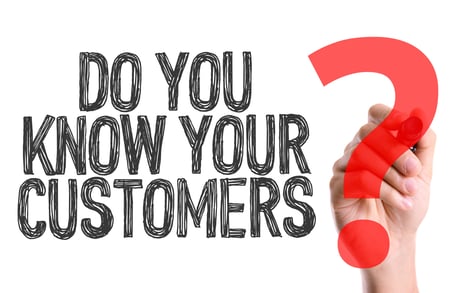It is incredibly important to your company's marketing strategy to know who your target audience is. This is how to find your target audience.
It may hurt to hear, but not everyone wants to hear about what you're selling. And that's okay.
No company will ever convince everyone to buy their product, no matter how hard they try. Some people don't drink Coke or wear Nike tennis shoes, but those companies seem to be doing well.
But what successful companies like Coke and Nike figured out is that putting messages in front of the right people yields the best marketing ROI. It's called audience targeting, the critical first step in creating effective advertising campaigns.
We'll show you how to find your target audience, so you can start making your advertising dollars work in your favor.
What Is Audience Targeting?
Audience targeting is the creation of target market segments based on a combination of characteristics. Marketers define modern target audiences by one or a combination of factors, including:
- Demographics (income, age, gender)
- Geography
- Psychographics (interests, attitudes, values)
- Behaviors
- Buyer journey stage
- Firmographics (company targeting)
The target audience describes the type of person who might be interested in your product or service. By understanding who they are, you can create more tailored, personalized messaging. Audience targeting helps you find your potential customer and engage them with relevant messages that are more likely to inspire a certain action.
How to Find Your Target Audience
Defining your target audience as a local business can be a simple task, especially if you offer services within a certain area. Competition is generally limited and more visible, making it easier to understand your market. Plus, there are plenty of accessible digital marketing tools to help businesses of all sizes target customers more effectively.
Working with a marketing agency allows you to leverage experts who can save time, but it's helpful to have some perspective on the process. And with the huge number of tools available, it's easier for local businesses to manage their marketing.
Let's look at some essential tasks you can do to get your message in front of customers who are willing and able to buy.
Getting Local Demographic Information
It's hard to use demographics alone to find pain points and buying motivations. But with behavioral or psychographic information, demographics help small businesses get a well-rounded idea of how to communicate with audiences.
As a local business, you can use public sources to understand your community's demographic makeup. Organizations like the U.S. Census Bureau or the Pew Research Center offer local demographic information, including:
- Income level
- Occupation
- Age group
- Education level
- Gender
- Racial identity
- Marriage and familial status
With that information, you can start to build customer personas and create relevant messages. For example, you may find that most of your community includes older retirees. Tapping into that audience will help your business, so you should create messages that connect with them.
Identifying Audiences Through Existing Customers
An established business has the benefit of existing customers that can help them identify the company audience. If you're running online campaigns or recording customer data, you should be using a data management platform (DMP) or CRM.
A CRM is a small business engine, the control center for your outreach. In one way, it lets you target your individual existing customers. You can segment them and send personalized messages that connect throughout the buying process.
For targeting new customers, your CRM segmentation data can give you insight into who's buying your product. If you have a broad target audience, a look at your customer data can help you tighten your targeting and create even more impactful messaging.
You can also get information by simply asking your customers important business questions. Use an email survey, website quiz, or online poll with a coupon or other incentive attached.
Look at Your Competition
A competitive analysis is valuable for a local business trying to improve the user experience. In online spaces, finding your competition can take some effort. But with local SEO, you can understand who is taking market share and how they're doing it.
Using keyword analysis through services like BuzzSumo or Ahrefs, you can learn search terms to find your target audience. Find what keywords have high search volume and low competition to fill in gaps with your website content.
If your competition is running a content marketing strategy, find out which topics are interesting users. Taking a popular topic and making it better can steal attention, get more shares, and help you build your audience.
Using Online Tools
Your CRM or DMP manages your user information, but there are countless integrations and analytical tools to help you use it. Keyword analysis tools, for example, can help you identify user search behaviors so you can create more relevant content. Meanwhile, you can analyze your own search traffic with Google Analytics to learn more about why your customers shop with you.
If you're learning about marketing, you know that social media plays a huge role at every step of the buyer journey, from lead generation to post-sale engagement. It's a great place to share content and expand your audience as well as ask questions to learn more about your customers in qualitative ways.
More importantly, social media, along with a host of marketing tools, gives you ways to tighten your targeting once you know who your customers are.
There are a few ways that different social and marketing platforms can help you target your audience.
Retargeting uses social media and ad networks to put your message in front of previous website visitors. You can increase your impressions and your chances of conversion.
Lookalike audiences are another growing trend. These are new users that share common characteristics with current customers or leads. Platforms like Facebook, MailChimp, and Twitter let you link customer profiles to their databases and pull more users into your audience.
Testing, Measuring and Redefining Audiences
Audience targeting is a never-ending cycle. You get information, build target audiences, create and execute campaigns, measure the results, and start all over again.
Measurement is essential because it helps you evolve with market trends and narrow in on your audience. You'll gain valuable perspectives by looking at KPIs like conversion rate or satisfaction scores. Your metrics will help you answer critical questions about reaching your target audience, such as:
- Where can you reach them?
- When should you send messages, and how frequently?
- What do effective messages look like?
- Why are your messages engaging?
Along with campaign performance, you can also learn about your audience's behaviors through A/B testing. For example, experimenting with your landing page design may reveal what verbiage or CTA placement generates the most leads. Through testing and measuring, you can find the right way to target customers and replicate worthwhile practices.
Stay Aware of Your Audiences
If you've been making assumptions about your target audience, it's time to start taking a data-driven approach. The tools are there to find and engage your customers. Now that you know how to determine your target audience, you'll ensure your marketing strategy is optimized to effectively reach them.
Need help with your audience targeting strategy?
The Express-News advertising staff is here to assist businesses of all sizes in San Antonio and beyond.



